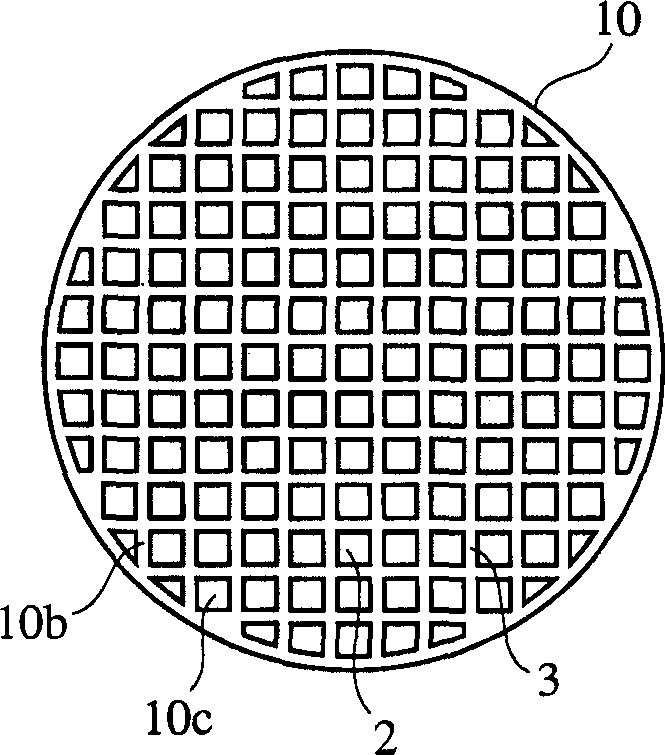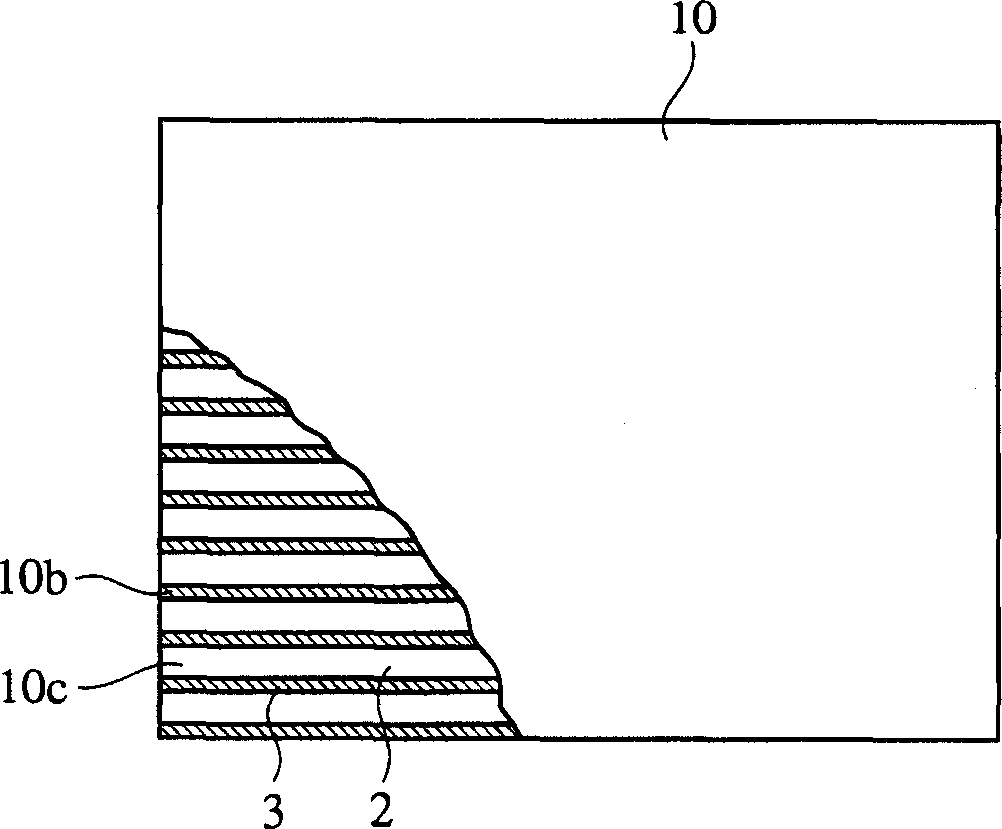Ceramic honeycomb filter
A ceramic honeycomb and filter technology, which is applied to machines/engines, mufflers, engine components, etc., can solve the problems of rising pressure drop, cumbersomeness, and smaller flow passages on the inflow side of the filter to achieve the effect of low pressure drop.
- Summary
- Abstract
- Description
- Claims
- Application Information
AI Technical Summary
Problems solved by technology
Method used
Image
Examples
Embodiment 1 and 2
[0075] Embodiment 1 and 2, reference example 1
[0076] For the manufacture of SiO with a mass of 49-51% 2 , 35-37% Al by mass 2 o 3 And cordierite, which is mainly composed of MgO with a mass of 13-15%, needs to be quantitatively mixed with kaolin powder, pseudo-fired kaolin powder, alumina powder, aluminum hydroxide powder, silica powder and talc powder to add binder and lubricant respectively And spherical resin powder used as a pore-forming agent. Water is added to the resulting mixture to make a plasticizable dosing mixture. The quantitative mixture is pressed into a cylindrical honeycomb and dried.
[0077]
Porogen
The average particle size
(μm)
20-100μm particles
Diameter ratio (mass%)
Example 1
64
75
Example 2
62
62
Example 3
52
48
[0078] The resulting molded body was sintered at a temperature of 1350-1440° C., as shown in FIG. 1 , to produce various...
Embodiment 3-7
[0098] Make the same plasticized quantitative mixture as in Example 1, and use the extrusion molding method to make a cylindrical honeycomb structure from the quantitative mixture. In order to obtain various wall thicknesses and every 1cm 2 The number of runners adjusted the size of the forming die. Each molded body was sintered at a temperature of 1350-1440° C. to produce the cordierite honeycomb structures of Examples 3-7 having various porous partition walls and through holes. The diameter of each honeycomb structure is 143mm, the length is 152mm, and the thickness of the partition wall is 0.15-0.33mm, every 1cm 2 The number of runners is 39-62. In addition, the porosity of each honeycomb structure was 65%, the average pore diameter was 20.8%, and the maximum value of the gradient Sn of the cumulative pore volume distribution curve was 1.12.
[0099] Both ends of the filter were sealed in the same manner as in Example 1 to produce a cordierite honeycomb filter. In the s...
Embodiment 8 and Embodiment 9
[0101] Embodiment 8 and embodiment 9, reference example 2
[0102] As a ceramic material with a high proportion surface area, activated alumina powder and alumina glue with a central particle diameter of 5 μm are mixed into water to obtain activated aluminum powder slurry. As in Examples 1 and 2 and Reference Example 1, this slip was coated on a ceramic honeycomb structure. After removing excess slurry, apply it repeatedly, and finally apply 60g / L activated aluminum to the honeycomb structure. The honeycomb structure was dried at 120°C and then sintered at 800°C. Further, the honeycomb structure was immersed in a platinum chloride hydroxide solution, dried at 120°C, and then fired at 800°C. A ceramic honeycomb filter with about 2 g / L of platinum catalyst was thus produced.
[0103] The same method as in Example 1 was used to measure the pressure drop of the ceramic honeycomb filter with platinum catalyst. The pressure drop of the ceramic honeycomb filter with platinum cata...
PUM
| Property | Measurement | Unit |
|---|---|---|
| thickness | aaaaa | aaaaa |
| density | aaaaa | aaaaa |
| porosity | aaaaa | aaaaa |
Abstract
Description
Claims
Application Information
 Login to View More
Login to View More - R&D
- Intellectual Property
- Life Sciences
- Materials
- Tech Scout
- Unparalleled Data Quality
- Higher Quality Content
- 60% Fewer Hallucinations
Browse by: Latest US Patents, China's latest patents, Technical Efficacy Thesaurus, Application Domain, Technology Topic, Popular Technical Reports.
© 2025 PatSnap. All rights reserved.Legal|Privacy policy|Modern Slavery Act Transparency Statement|Sitemap|About US| Contact US: help@patsnap.com



